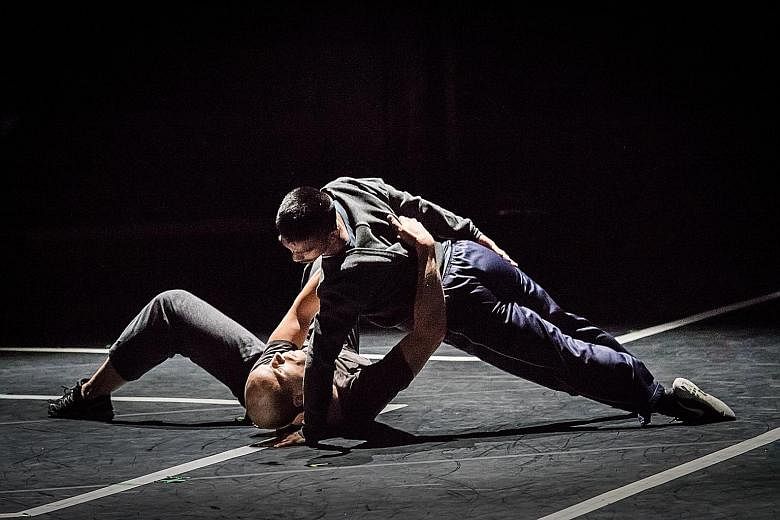REVIEW / DANCE
A LETTER/SINGAPORE
The Singapore Airlines Theatre, Lasalle College of the Arts/Last Friday
A Letter/Singapore by African- American choreographer Bill T. Jones gave a voice to those who are often drowned out by others more powerful than themselves.
The work was confrontational, but never brazen and the energetic cast asserted itself through a confident display of joy, exuberance and social differences. Jones' experience as a stalwart of American modern dance was clearly seen in this rich and layered work.
The audience was pelted with situations that highlight current social issues, including the plight of the disenfranchised and marginalised.
In a clear reference to the recent killing of black people by white policemen in the United States, images of burning cars and people marching on streets were projected onto a bed and a large white board on stage. The dancers echoed these themes of oppression and marginalisation through their moves.
They also highlighted issues of homosexuality through the vocabulary of their moves, with the expressive styles of voguing, street and hip-hop dance featured in equal measure alongside the formalism of American modern dance.
This meeting of styles was at times harmonious and at times dissonant.
Jones' work was framed by author James Baldwin's The Fire Next Time (1963). The book has an essay written as a letter to Baldwin's nephew, in which the author contemplates the problems faced by black people in the US in the 1960s.
Jones made it a point to make the themes relevant to Singapore. He worked with dance students from the Lasalle College of the Arts to ground the issues of multiculturalism and majority-minority race sensitivities in the Singapore context.
This was seen in notable moments such as two solos by Neo Jia Ling and Muhammad Sharul Mohammed. Neo's was full-bodied and incorporated spoken word, while Sharul's had elements of Malay dance. The inclusion of Malay dance raised questions of appropriation and whether the act was one of empowerment or condescension.
Indeed, the work was not without its problems. The first half threatened to become the very thing it was trying to resist - the drowning out of other voices.
Everything unfolding on stage pointed towards restoring power and validity to the marginalised. The performers danced with a devil- may-care attitude to dirty techno beats as if telling the audience, like it or not, they were here to stay.
It was not until the second half of the show, when other powers-that- be were evoked through the singing of school and national anthems, that an engaging dialogue between the oppressor and the oppressed began to happen.
Against the words of Majulah Singapura, for example, acts such as catwalking and arm-whacking expressed defiance at being quashed and made invisible by larger structures. Without the second half, the work would not have been as potent.
Despite packing in difficult social issues, the work was well-paced and did not feel crowded or overwhelming. It broached inconvenient topics without being didactic and it proclaimed but did not coerce.
Most importantly, it was as much tender and moving as it was brave and powerful.
•For more Sifa 2016 stories, go to str.sg/ZtWh

